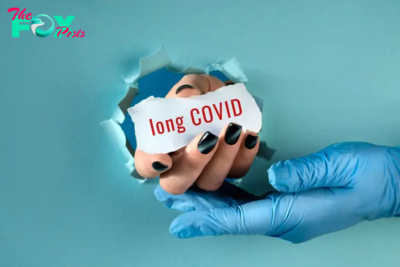Health
Risks and Recovery: Radiofrequency Ablation for Vein Health
Radiofrequency Ablation (RFA) has undoubtedly revolutionised the field of vein health by offering a less invasive and highly effective approach to treating various venous conditions. For individuals grappling with issues like varicose veins and chronic venous insufficiency (CVI), RFA has emerged as a beacon of hope within the healthcare landscape. It has become increasingly common in vein treatment clinics across the United States, providing a promising solution for individuals dealing with vein-related conditions. As the article explores further into this groundbreaking procedure, and more deeply so people can gain a comprehensive understanding.
Understanding Radiofrequency Ablation
Radiofrequency ablation (RFA), a medical procedure that has gained prominence in vein Health, offers a minimally invasive approach to address various venous issues. To fully comprehend the significance of RFA, it’s essential to delve into its intricacies, including the procedure itself, potential risks, the recovery process, and more.
What to Expect
Before undergoing RFA at one of the vein treatment clinics, patients should familiarize themselves with the process to alleviate any apprehensions and ensure a smoother experience.
Preparation:
Preparation for RFA is a crucial phase that involves specific instructions from Healthcare providers. Patients may be required to fast for a certain period before the procedure or discontinue certain medications that could interfere with the treatment’s effectiveness. These preparatory measures are essential to ensure the procedure’s success.
Anesthesia:
RFA is typically performed under local anesthesia, meaning patients are awake but numb in the treatment area. This approach reduces the overall risks associated with anesthesia and allows patients to communicate with the medical team during the procedure. General anesthesia is rarely necessary for RFA, contributing to its minimally invasive nature.
Catheter Insertion:
The heart of the RFA procedure lies in the precise insertion of a thin catheter into the affected vein. This step is guided by real-time ultrasound imaging, ensuring accuracy and effectiveness. The catheter is the conduit for delivering radiofrequency energy to the vein wall.
Heating and Closure:
As the catheter is carefully positioned within the targeted vein, it emits radiofrequency energy. This energy generates heat, which serves a pivotal role in the procedure. The heat causes the vein’s walls to contract and seal shut. This effect addresses the immediate issue and redirects blood flow to healthier veins, ultimately improving overall circulation.
Recovery:
After the RFA procedure, patients can expect a relatively straightforward recovery process. While the specifics may vary from case to case, some general guidelines apply.
Patients may be advised to wear compression stockings to aid in the healing process and reduce swelling. These stockings help maintain pressure on the treated veins, promoting gradual closure and preventing complications.
Strenuous activities should be avoided for a specified period, typically a few weeks, post-procedure. Light activities, however, can often be resumed relatively quickly, allowing patients to return to their daily routines with minimal disruption.
Regular follow-up appointments with healthcare providers are essential during the recovery phase. These appointments monitor the patient’s progress, ensure that the treatment achieves the desired results, and address any concerns or complications that may arise.
Maintaining a healthy lifestyle and adhering to proper vein care practices play a pivotal role in ensuring the long-term success of RFA. Regular exercise and other habits like elevating the legs and avoiding prolonged periods of sitting or standing can contribute to overall circulatory health.
Potential Risks and Complications
While RFA is generally considered a safe procedure, as with any medical intervention, there are potential risks and complications to be aware of. Understanding these risks can help patients make informed decisions and manage their expectations.
Pain or Discomfort:
Mild pain or discomfort at the catheter insertion site is a common side effect of RFA. However, it is typically temporary and can be managed with over-the-counter pain relief medication recommended by the Healthcare provider.
Bruising and Swelling:
Some patients may experience bruising and swelling around the treated area. These symptoms, while unsettling, are a natural part of the healing process. They usually subside within a few weeks, and patients can take comfort in knowing that they are part of the body’s response to the procedure.
Infection:
While rare, there is a minimal risk of infection at the catheter insertion site. Healthcare providers take stringent measures to minimize this risk, such as maintaining a sterile environment during the procedure and providing patients with post-procedure care instructions to prevent infection.
Blood Clots:
Though uncommon, the formation of blood clots is a potential complication of RFA. To mitigate this risk, healthcare providers may prescribe blood-thinning medications or recommend other preventive measures, such as early mobilization after the procedure.
Conclusion:
In conclusion, radiofrequency ablation (RFA) for vein Health is a promising solution for individuals seeking relief from varicose veins and chronic venous insufficiency. This minimally invasive procedure, widely available at vein treatment clinics in the United States, offers a range of benefits, including personalized treatment, immediate relief, and a high success rate.
While potential risks and complications exist, they are typically rare and manageable with proper medical guidance and attentive aftercare. RFA represents a significant advancement in vein Health, providing hope for those looking to enhance their circulatory system and overall well-being.
-

 Health22h ago
Health22h agoWhy Is It So Bad to Pop a Pimple?
-

 Health22h ago
Health22h agoA Test Told Me I’m Basically Made of Plastic. You Probably Are Too
-

 Health1d ago
Health1d agoWe've never seen the Fitbit Versa at this rock bottom price before, surely it won't be around long
-

 Health1d ago
Health1d agoGut microbes that get you drunk and damage your liver − how the microbiome can create a microbrewery
-

 Health1d ago
Health1d agoWhen Meaningful Work Backfires
-

 Health1d ago
Health1d agoThe lucky ones: Former world champion’s life was saved by a clinical trial. Now she wants others to get the chance.
-

 Health2d ago
Health2d agoHow to Turn ‘The Tortured Poets Department’ Into an Effective—and Fun—Workout
-

 Health2d ago
Health2d agoSave 32% on this feature-packed Garmin Instinct running watch



























